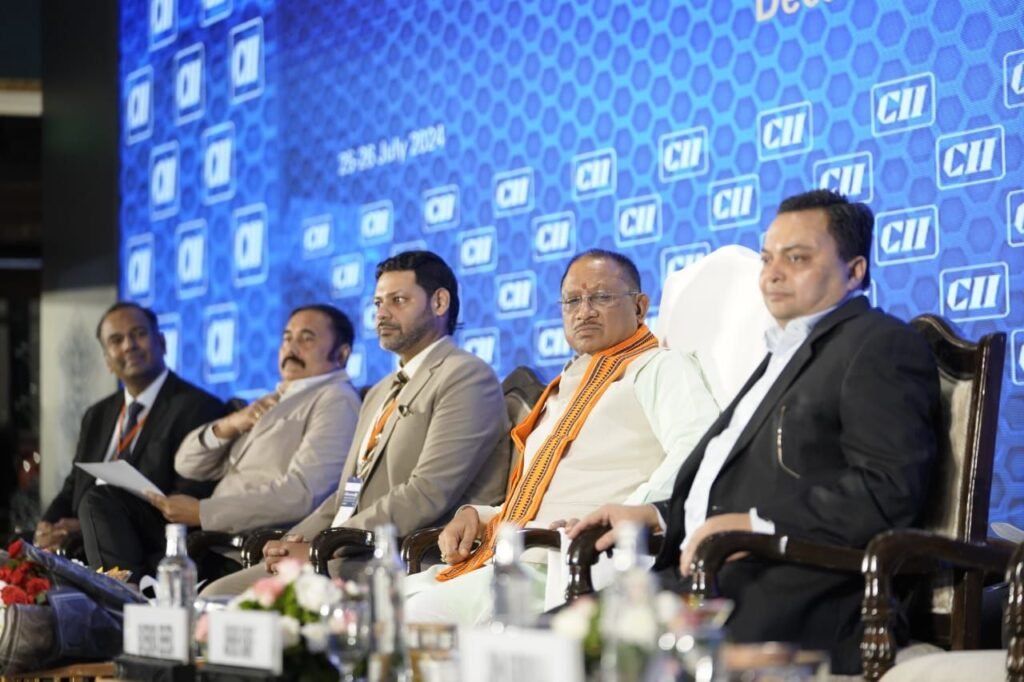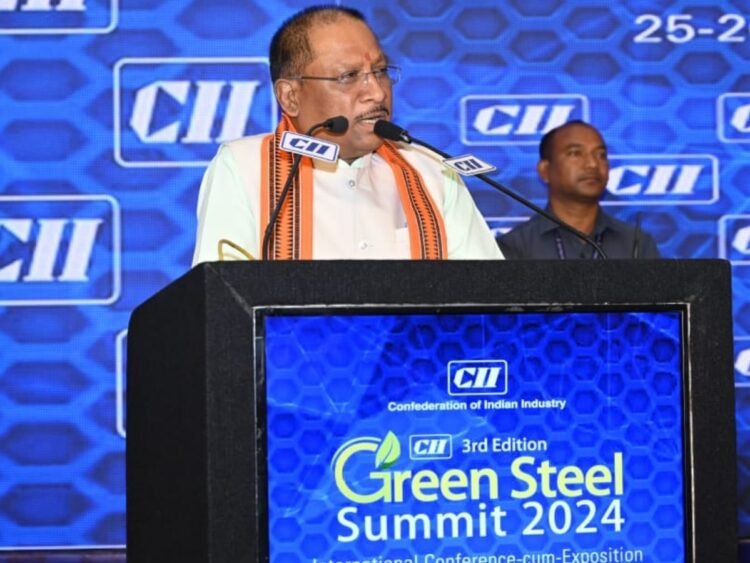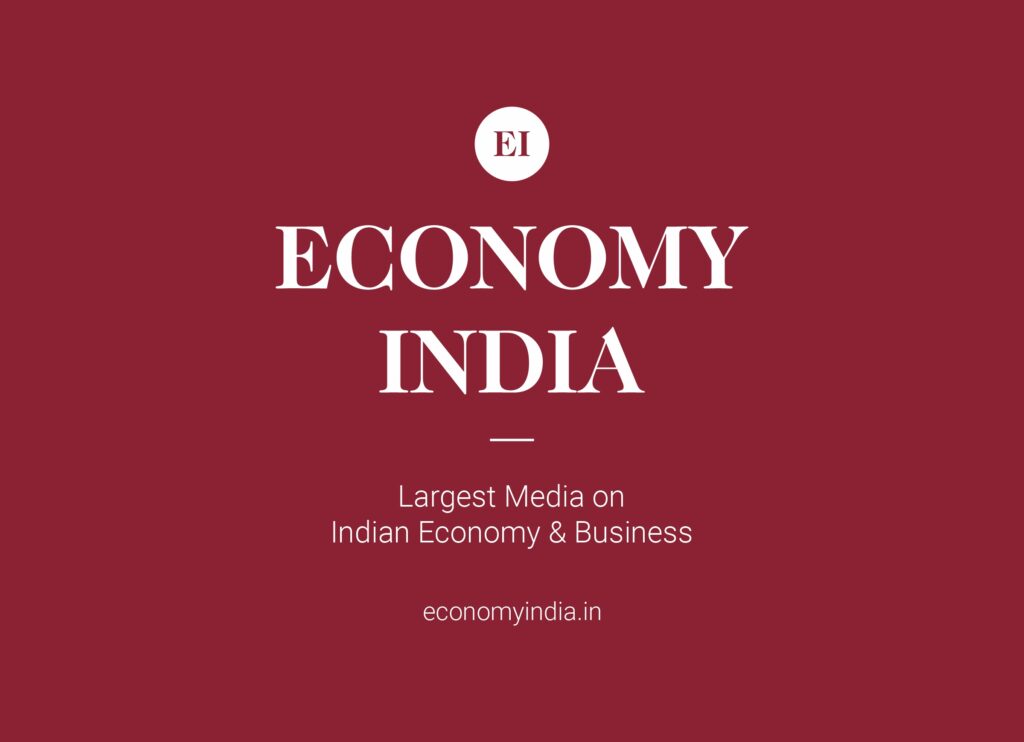With a Net Zero carbon target by 2070, India’s steel industry eyes transformative change through green technologies and innovation. Global industrialists and researchers unite in Naya Raipur to explore sustainable solutions.
Naya Raipur | Economy India Bureau
In a significant push towards sustainable industrial development, the Confederation of Indian Industry (CII) hosted the Green Steel and Mining Summit in Naya Raipur on Monday. The event drew participation from across India and abroad, including leading steel industrialists, mining experts, environmental researchers, and policymakers.
Held against the backdrop of India’s ambitious climate goals — particularly the 2070 Net Zero Carbon Emission target — the summit spotlighted innovation, clean technology, and industrial policy as key levers to decarbonize one of the country’s most emission-intensive sectors: steel production.

A High-Level Gathering with a Global Focus
Delegates from countries with advanced green steel initiatives joined Indian stakeholders to share global best practices. They explored cutting-edge solutions for reducing carbon emissions in steel manufacturing, particularly in a mineral-rich and industrially important state like Chhattisgarh.
India’s Steel Hub Steps Forward
Chhattisgarh, one of India’s steel and mining strongholds, is positioning itself as a leader in the green industrial movement. The state’s potential to become a hub for green steel innovation was reinforced by the presence of Chief Minister Vishnu Deo Sai, Finance Minister O.P. Choudhary, and Industry Minister Lakhan Lal Dewangan at the summit.
What Is Green Steel?
According to CII’s former president Siddharth Agrawal, green steel refers to steel produced with low or zero carbon emissions. Unlike traditional methods that rely on coal and coke — major contributors to greenhouse gas emissions — green steel production leverages cleaner fuels like green hydrogen, renewable electricity, and direct reduced iron (DRI) technologies.
He warned that continued reliance on conventional methods post-2030 could raise production costs by 4–13%, emphasizing the economic and environmental urgency for change.
CM Vishnu Deo Sai: Climate Challenge Is Industry’s Opportunity
Calling climate change a “global threat and local opportunity,” Chief Minister Sai emphasized the importance of aligning industrial progress with environmental responsibility.
“Chhattisgarh is committed to becoming a model state in green energy transition,” he said. “Our new industrial policy incentivizes innovation, sustainability, and clean technology.”
Policy Incentives Under Industrial Policy 2024–30
Industry Minister Lakhan Lal Dewangan elaborated on the state’s Industrial Policy 2024–30, which supports:
- Green enterprise development
- Energy efficiency enhancement
- Investment in green hydrogen projects
- Subsidies for low-emission technologies
The policy aims to create a fertile ecosystem for both domestic and foreign investors focusing on sustainability.
Multi-Session Summit: Deep Dive into Clean Technology
The summit featured a series of sessions including:
- PPT-based presentations on low-cost, high-output methods
- Digital innovation in mining
- Use of AI and IoT for real-time emission monitoring
- Finance models for green steel infrastructure
Investment Potential Recognized by Foreign Delegates
International industrialists expressed keen interest in Chhattisgarh’s policy ecosystem. With abundant raw materials, a skilled workforce, and clear state incentives, the region is seen as a rising destination for sustainable steel production.
Private Sector Pledge to Go Green
Private players at the event pledged commitment to carbon neutrality goals and expressed readiness to transition from blast furnace methods to cleaner alternatives. Several firms also showcased pilot projects already underway.
Academic & Research Inputs: Crucial to Green Transition
Environmental researchers and climate technologists presented findings on how India’s current steel output could be decoupled from its carbon footprint using global frameworks like Science Based Targets (SBT) and Life Cycle Assessments (LCA).
Summit’s Fourth Edition: Setting the Agenda for Industry 5.0
The 2025 edition of the Green Steel Summit marked the fourth major industry-environment convergence by CII, pushing forward the concept of Industry 5.0, where sustainability and technology drive industrial evolution.
Chhattisgarh’s Role in India’s Net Zero Roadmap
With its strong mining base, Chhattisgarh has a pivotal role to play. Investments in green steel not only support India’s climate goals but also offer economic revitalization for regions impacted by legacy pollution or industrial decline.

Collaborative R&D Will Be Key
The summit called for stronger collaboration between:
- State governments
- Public sector steel companies
- Private players
- Research institutes
Joint R&D ventures and government-funded technology incubators could help bring green steel tech to scale.
Carbon Border Taxes & Global Competitiveness
Policy experts warned that global carbon border adjustment mechanisms (CBAMs) may penalize high-emission exports. Green steel adoption is crucial to maintaining global competitiveness for Indian steel.
Workforce Reskilling: A Green Economy Necessity
The transition to green steel will require massive reskilling of industrial workers, a point raised by various speakers. State-level skilling programs are being aligned to include modules on sustainability, green engineering, and clean energy practices.
Financing the Green Transition
Public-private partnerships (PPPs), green bonds, and multilateral climate finance will be needed to support high initial investments in infrastructure and technology for green steel.
India’s 2070 Vision: Industrial Sustainability
The summit aligns with India’s long-term climate vision. With the steel sector contributing ~12% of India’s industrial emissions, greening this sector is non-negotiable for meeting international commitments under COP28 and beyond.
Chhattisgarh as a Green Steel Lab for India
By offering regulatory clarity, land, water, and policy support, Chhattisgarh can serve as a pilot state to test new technologies and scale up nationally.
Summit Outcomes: Policy Recommendations & Roadmaps
CII announced that detailed policy recommendations and a Green Steel Roadmap will be shared with the Ministry of Steel and NITI Aayog for national integration.
Carbon Credits & Market Mechanisms
Discussion also included building an Indian carbon market where companies can monetize emission savings, encouraging rapid adoption of low-emission technologies.
Industry Must Lead the Climate Response
As global climate risks grow, the Indian steel industry must pivot from being a carbon-intensive sector to a climate solution provider. The 2025 CII Green Steel Summit stands as a crucial step toward this transformation — with Chhattisgarh leading the way.
(Economy India)















